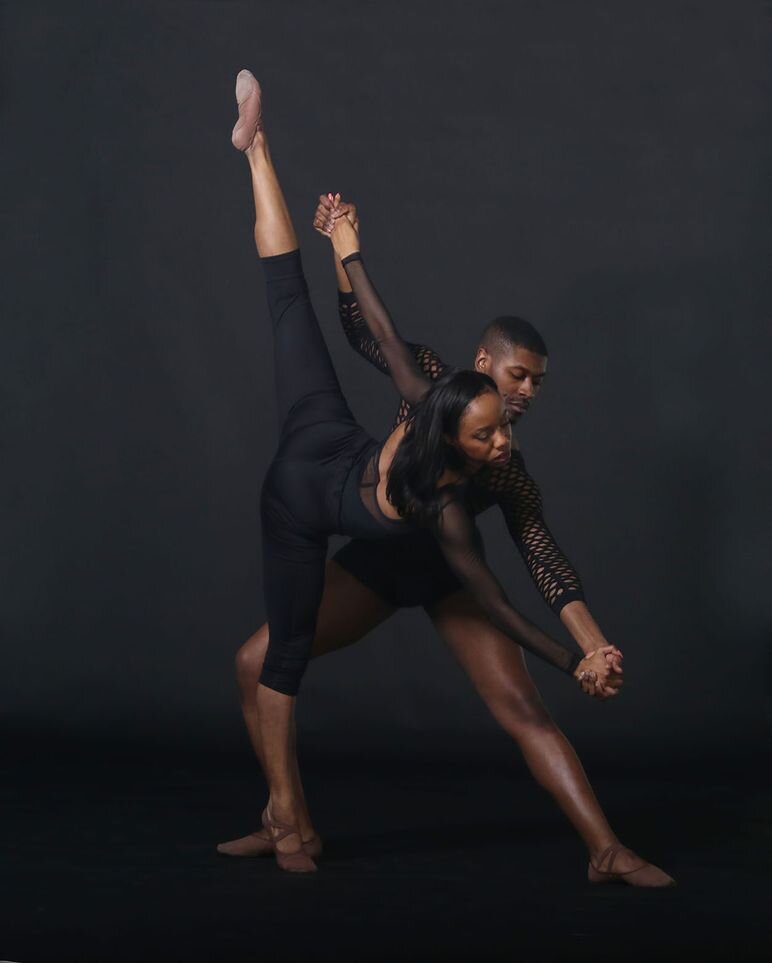A Black Storybook
The Village Dance Project
Atlas INTERSECTIONS Festival
Washington, D.C.
February 23, 2020
By Krystal Leniece (@Krystalgems__)
Seats quickly fill in the sold-out Sprenger Theatre, the anticipation growing for artistic director Rachael Sutherland’s first ever production of an evening-length work. The sounds of light jazz and buzzing conversations bounce off the walls. This is a crowd of people connected; hugs and warm acknowledgements are shared, a dance between tonight’s village has begun.
A Black Storybook plays out just like the title suggests: an episodic storytelling of Black life and the intricacies of intercommunity. In the program, which has the feel and look of something straight out of a Black church, Sutherland opens up about her realization that the life she had grown to understand -- a loving two-parent household and many mentors -- is neither a universal, nor universally acknowledged, experience.
The work is divided into nine vignettes, the program reading like an order of Sunday services. In the first episode, entitled “Intro,” eight bodies emerge from the wings in a succession of saunters. In “The Community,” moments of camaraderie are danced with rhythm and poise. A repetitive slide, more complicated than The Wobble, seamlessly unfurls before our eyes.
Soloist Andre’ana Miller captivates the audience in “The Conversation.” Miller virtuosically snakes between balletic lines, an undulating spine, and a groove so grounded the ancestors have no choice but to wake up. House music blares as the dancers entice us with their sweeping turns and sustained movements. I was longing to see them give into the rhythm. Finally they did! They sank into the pocket of the beat and connected to the earth.
In the interlude before “The Aels,” Sutherland delicately passes out flowy white jumpsuits and, in a moment of rawness and transparency, the dancers change onstage. They float to the edge of the stage, standing in one horizontal line. This piece takes a contemporary liturgical spin. The classic undulating torso of liturgical dance mixed with skillful, dancerly athleticism.
The night breezes by with five more short stories to close out the anthology. Sutherland mourns, writhes, and contends with how one's village can only protect Black boys from so much before the world shows them its dark side. We see another break-out soloist, Jada Spriggs, who jumps, melts, and shares her soul with precision and ease. The dancers move as one unit, one village with exactitude: quick moving feet coincide with the joyful gospel music.
Right out of the gate, with her first evening-length production, Sutherland cements her place in the lineage of dance artists unpacking the specificity of Black life in America. A Black Storybook displayed the range of the cast, as they marry storyline with abstract movements. Sutherland leaves room for wonder, leaves room for the village to stretch their minds and check themselves. From the balletic steps to the complicated hip-hop-like footwork, each dancer is showcased beautifully.
This autobiographical work is filled to the brim with an exemplary display of just how crafty dance can be. In the very last moment of the piece, the cast encloses Sutherland in a heart warming embrace stirring up a rather urgent reminder: in our life’s journey no one does it alone: Find your village, reconnect with your village and love on them while you still can.
Photos courtesy of Rachel Sutherland



